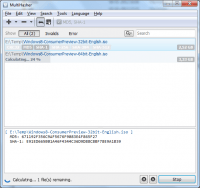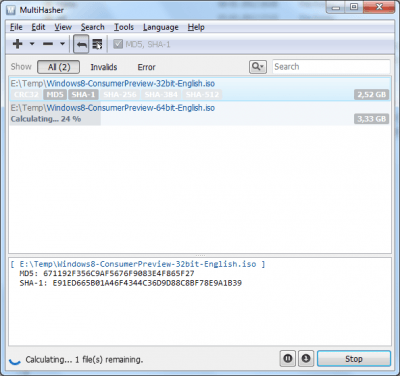

Eventually, a miner will finish producing a certificate for a block which includes our specific transaction request.Begins the process of producing the proof-of-work “certificate of legitimacy” for the potential block, once all transaction requests in the block have been verified and executed on the local EVM copy.The miner awards the transaction fee for each such transaction request to their own account.
#Ethminer hash calculator code
no one is trying to transfer ether out of an account they haven’t produced a signature for, the request is not malformed, etc.), and then executes the code of the request, altering the state of their local copy of the EVM.

The average computer was unlikely to earn enough block rewards to cover the associated costs of mining. In most cases, miners had to purchase dedicated computer hardware, and have access to inexpensive energy sources. However, not everyone could mine ether (ETH) profitably.

Miners helped this happen by solving computationally difficult puzzles to produce blocks, securing the network from attacks.Īnyone was previously able to mine on the Ethereum network using their computer. In decentralized systems like Ethereum, we need to ensure that everyone agrees on the order of transactions.
#Ethminer hash calculator software
Ethereum miners - computers running software - used their time and computation power to process transactions and produce blocks prior to the transition to proof-of-stake. Mining is the lifeblood of any proof-of-work blockchain. Unlike gold or precious metals however, Ethereum mining was also the way to secure the network by creating, verifying, publishing and propagating blocks in the blockchain. In proof-of-work Ethereum, the only mode of issuance was via mining. Gold or precious metals are scarce, so are digital tokens, and the only way to increase the total volume in a proof-of-work system is through mining. The word mining originates in the context of the gold analogy for cryptocurrencies. Mining is the process of creating a block of transactions to be added to the Ethereum blockchain in Ethereum's now-deprecated proof-of-work architecture. To better understand this page, we recommend you first read up on transactions, blocks and proof-of-work. Read more on (/upgrades/merge/), (/developers/docs/consensus-mechanisms/pos/), and (/staking/). Instead, Ethereum is secured by validators who stake ETH. Proof-of-work is no longer underlying Ethereum's consensus mechanism, meaning mining has been switched off.


 0 kommentar(er)
0 kommentar(er)
